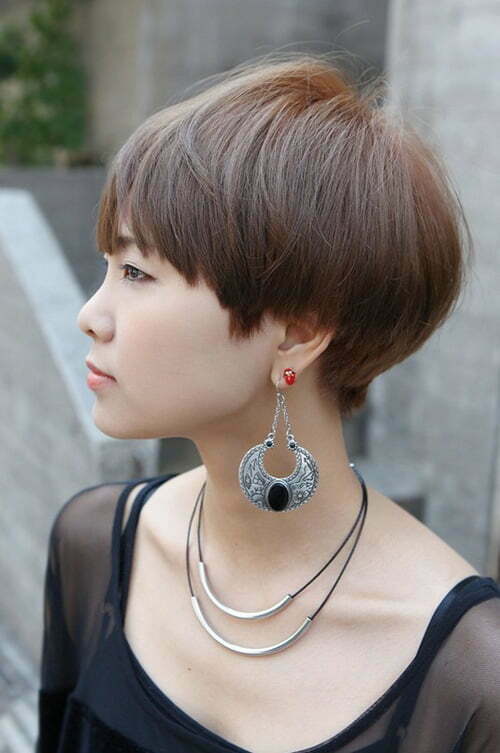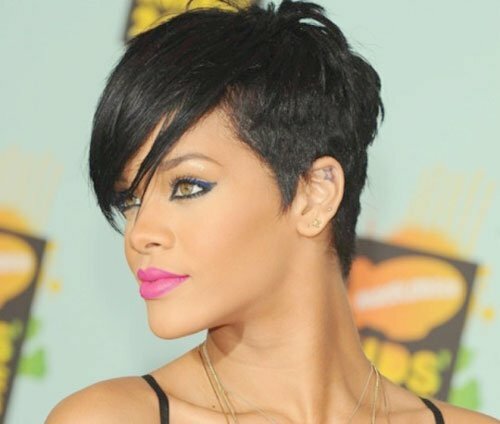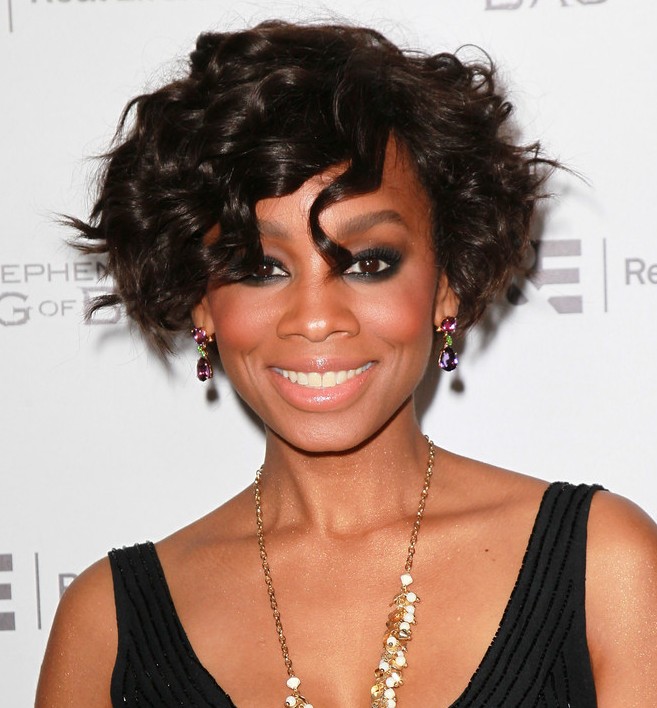Women Haircuts Definition
Source link (google.com.pk)
A hairstyle's aesthetic considerations may be determined by many factors, such as the subject's physical attributes and desired self-image or the stylist's artistic instincts.
Physical factors include natural hair type and growth patterns, face and head shape from various angles, and overall body proportions; medical considerations may also apply. Self-image may be directed toward conforming to mainstream values (military-style crew cuts or current "fad" hairstyles such as the Dido flip), identifying with distinctively groomed subgroups (e.g., punk hair), or obeying religious dictates (e.g., Orthodox Jewish have payot, Rastafari have Dreadlocks, North India jatas, or the Sikh practice of Kesh), though this is highly contextual and a "mainstream" look in one setting may be limited to a "subgroup" in another.
A hairstyle is achieved by arranging hair in a certain way, occasionally using combs, a blow-dryer, gel, or other products. The practice of styling hair is often called hairdressing, especially when done as an occupation.
Hairstyling may also include adding accessories (such as headbands or barrettes) to the hair to hold it in place, enhance its ornamental appearance, or partially or fully conceal it with coverings such as a kippa, hijab, tam or turban.
Hairstyle process[edit]
Most cosmetology programs in the United States require students to purchase practice heads that are made with real human hair. Students can cut, color and add permanents as they are trained in the procedures.
Hair dressing may include cuts, weaves, coloring, extensions, perms, permanent relaxers, curling, and any other form of styling or texturing.
Length and trimming[edit]
Astronaut Michael E. Lopez-Alegria, Expedition 14 commander and NASA space station science officer, trims cosmonaut Mikhail Tyurin's hair in the Unity node of the International Space Station
Hair cutting or hair trimming is intended to create or maintain a specific shape and form. Its extent may range from merely trimming the uneven ends of the hair to a uniform length to completely shaving the head.
The overall shape of the hairstyle is usually maintained by trimming it at regular intervals. There are ways to trim one's own hair but usually another person is enlisted to perform the process, as it is difficult to maintain symmetry while cutting hair at the back of one's head. Although trimming enhances the hair's appearance by removing damaged or split ends, it does not promote faster growth or remove all damage along the length of the hair.
Stylists often wash a subject's hair first, so that the hair is cut while still slightly damp. Compared to dry hair, wet hair can be easier to manage in a cut/style situation because the added weight and surface tension of the water cause the strands to stretch downward and cling together along the hair's length, holding a line and making it easier for the stylist to create a form.
Brushing and combing[edit]
Hair styling in Himba tribe
Brushes and combs are used to organize and untangle the hair, encouraging all of the strands to lie in the same direction and removing debris such as lint, dandruff, or hairs that have already shed from their follicles but continue to cling to the other hairs.
There are all manner of detangling tools available in a wide variety of price ranges. Combs come in all shapes and sizes and all manner of materials including plastics, wood, and horn. Similarly, brushes also come in all sizes and shapes, including various paddle shapes. Most benefit from using some form of a wide tooth comb for detangling. Most physicians advise against sharing hair care instruments like combs and clips, to prevent spreading hair conditions like dandruff and head lice.
The historical dictum to brush hair with one hundred strokes every day is somewhat archaic, dating from a time when hair was washed less frequently; the brushstrokes would spread the scalp's natural oils down through the hair, creating a protective effect. Now, however, this does not apply when the natural oils have been washed off by frequent shampoos. Also, hairbrushes are now usually made with rigid plastic bristles instead of the natural boar's bristles that were once standard; the plastic bristles increase the likelihood of actually injuring the scalp and hair with excessively vigorous brushing.
Drying[edit]
Hair dryers speed the drying process of hair by blowing air, which is usually heated, over the wet hair shaft to accelerate the rate of water evaporation.
Excessive heat may increase the rate of shaft-splitting or other damage to the hair. Hair dryer diffusers can be used to widen the stream of air flow so it is weaker but covers a larger area of the hair.
Hair dryers can also be used as a tool to sculpt the hair to a very slight degree. Proper technique involves aiming the dryer such that the air does not blow onto the face or scalp, which can cause burns.
Women Haircuts Form Long Hair Names Medium Length For Round Faces Short Layers Updos Over 50 2013
Women Haircuts Form Long Hair Names Medium Length For Round Faces Short Layers Updos Over 50 2013
Women Haircuts Form Long Hair Names Medium Length For Round Faces Short Layers Updos Over 50 2013
Women Haircuts Form Long Hair Names Medium Length For Round Faces Short Layers Updos Over 50 2013
Women Haircuts Form Long Hair Names Medium Length For Round Faces Short Layers Updos Over 50 2013
Women Haircuts Form Long Hair Names Medium Length For Round Faces Short Layers Updos Over 50 2013
Women Haircuts Form Long Hair Names Medium Length For Round Faces Short Layers Updos Over 50 2013
Women Haircuts Form Long Hair Names Medium Length For Round Faces Short Layers Updos Over 50 2013
Women Haircuts Form Long Hair Names Medium Length For Round Faces Short Layers Updos Over 50 2013
Women Haircuts Form Long Hair Names Medium Length For Round Faces Short Layers Updos Over 50 2013
Women Haircuts Form Long Hair Names Medium Length For Round Faces Short Layers Updos Over 50 2013










No comments:
Post a Comment